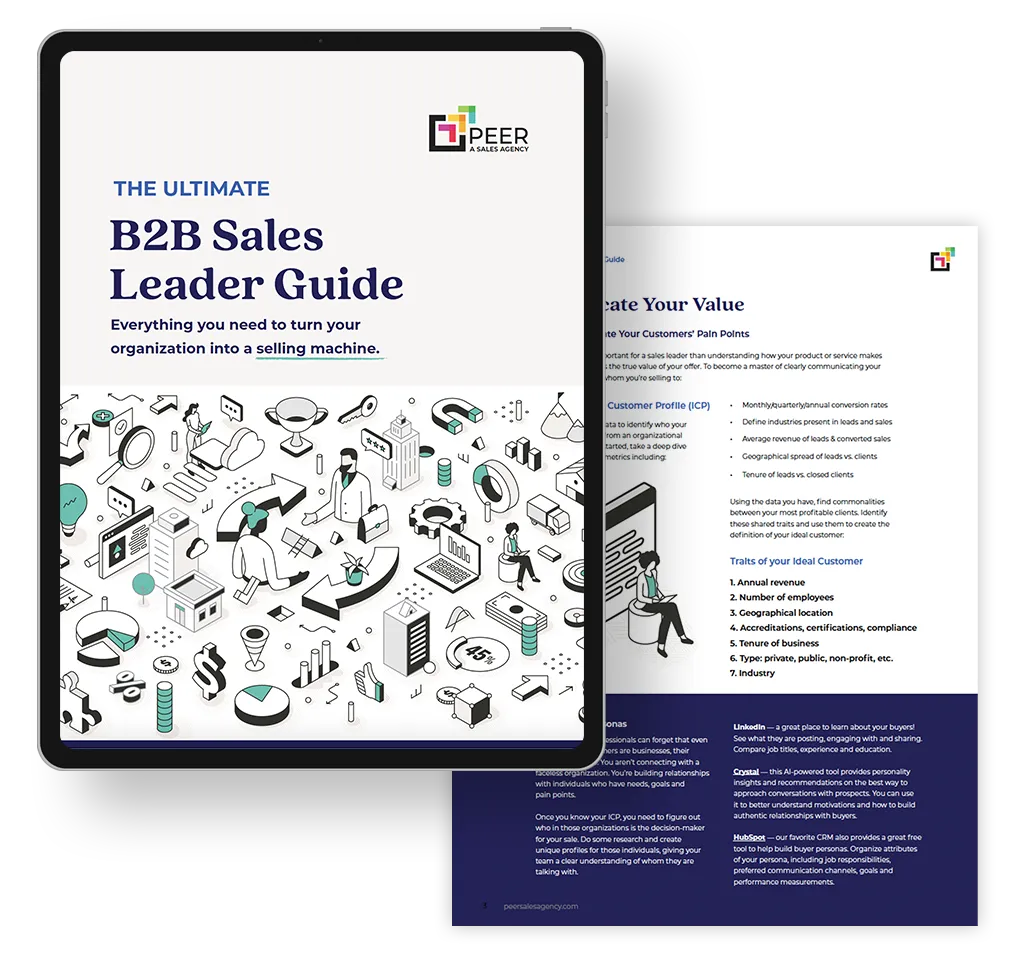We’ve all searched online for information or tips to solve problems big and small. This is the behavior marketers count on when developing a content marketing strategy. But even if you’re not a seasoned marketer, you can follow the four main steps below to learn how to create a lead magnet.
To get started generating leads online, you first have to decide what your lead magnet will be. Lead magnets can be ebooks, guides, checklists, etc. Essentially, lead magnets are any kind of digital content that you provide to your prospects in exchange for their contact information.
Core principle: Content marketing is an exchange of value between you and your prospects. Content for contact information. Prospects will NOT willingly become a lead unless you give them something valuable enough to compel them to give you something they value: Their contact information.
Think about it this way: A prospect’s contact information is valuable to you. If you’ve ever placed an ad in a publication or attended a trade show, you’ve essentially paid for access to someone else’s contact list. Creating a lead magnet allows you to build your own list. You’re just devoting your time and money to developing content, that if done right, can generate leads for years to come.
Designing your lead magnet begins by selecting a topic. Topic is critical. You have to select something that will entice your target audience to act. I’m going to walk you through the four main steps to creating a lead magnet. When we’re finished, you’ll have an outline for your lead magnet content.
Key Takeaway #1: Know your audience.
First things first. Who are you targeting? It’s important to make your lead magnet appealing to your audience. Think about your customers. Now ask yourself a few questions about them to identify some common traits or threads:
- What industry are they in?
- What role do they hold within their organization?
- How long have they been in that role?
- What is their highest level of education?
- Are they male or female?
- Yes, it matters…men and women make decisions differently.
- What are their skills?
- What tone do they respond to?
- Formal – very structured and professional; or
- Casual – they want to be treated like humans first.
Now, here’s where things get a bit tricky. A lot of organizations will target multiple people within the same company who are actively involved in the purchasing process. Your target, however, needs to be the main decision maker.
In time, as you get more comfortable, you can build lead magnet content for others. But for now, stick with the primary decision maker.
Once you’ve outlined a profile of your decision maker, build a “persona.” Remember, a persona is a representation of your target customer. Having a persona to quickly reference sets you up perfectly for the next step.
Key Takeaway #2: Your topic must be relevant to your audience.
Choosing a topic that will grab your prospective customers attention starts by asking yourself some questions about them:
- What pains do your customers have that your product or service solves?
- How have your customers tried to solve this pain without you?
- What finally motivated them to come looking for you? The straw that broke the camel’s back so to speak.
- What is their number one goal for this year?
- What is the top hurdle they face in order to achieve that goal?
There are a couple of ways to answer those questions.
First, talk to your customers. If you don’t know what keeps them up at night, ask them. But please, do not literally ask them, “What keeps you up at night?” Instead, use probing questions to get them thinking about the challenges they face.
Questions like these should help them open up:
- Last year (or whenever you last helped them) you called us to help you with X, I was wondering how the solution we provided has been working out for your team?
- We’ve been working together for a while now, and I wanted to see if anything has changed for you all? Are you facing new challenges that aren’t addressed with your current solution?
- We’re getting ready to close out another year. Have you been tasked with new challenges or areas you need to address in 2020?
- As we close out 2019, how well do you think the organization did toward achieving your annual goals?
- Are there plans to help achieve more in 2020?
These types of conversations not only help you understand what types of challenges your current customers face, but they also give you a glimpse into the mind of prospective buyers. And, who knows? You might identify quick wins to close more business before 2019 closes.
If talking to your customer isn’t an option, well…that sucks. But, I get it.
Another way to see what your customers are struggling with is to visit the website of important trade shows for your industry. Browse the breakout session titles and review the speaker bios. Take note of the titles and any similarities between the sessions to identify ideas for lead magnet content.
If someone is taking time (a LOT of time) to design a 30-60 minute session around a particular topic for a trade show and it was selected by the organizers, you can almost guarantee that it’s something that will appeal to your audience.
Key Takeaway #3: Create an outline.
Well organized content starts with an outline. It’s time to put what you learned from your research into an outline. Getting your ideas out and organizing them in an outline will help you stay focused and ensure you are creating a piece of content that will provide value to your audience.
When developing your outline, ask yourself these questions:
- What are the 3-5 key takeaways your audience would find helpful or valuable?
- What strategies or tactics can you provide to help your audience solve their pain?
- How do you want to deliver this message? Blog article? Video? Podcast?
- Are you going to write this or pass it along to a writer to help you pull your message together?
Our FREE Lead Magnet Outline Template at the end of this article will walk you through each step of the outline process. So whether you’re writing the content yourself or delegating the task to someone else, this handy guide will keep everyone on track.
Remember, the actual lead magnet content can take many forms: a whitepaper, checklist, Q&A document, resource guide with infographics or templates, or even a summary document of the key takeaways in a blog post, video or podcast. Honestly, the sky’s the limit.
Key Takeaway #4: The headline has to be killer.
Core principle: A headline plays a huge role in attracting prospects to read or interact with your content. So, it needs to be good! Writing headlines is an art and takes a lot of trial and error to come up with something that will entice the most prospects.
A good way to practice is by using the news app on your phone. Browse the headlines and take note of which titles inspired you to click. I’m not suggesting you opt for “click-bait” style of headlines, but I do believe you can get a feel for the cadence and flow of an effective headline.
Once you have some ideas of headline elements that attracted you, write 15 headlines. Be direct and descriptive.
To narrow your choices, use Coschedule’s Headline Analyzer, a free online tool from one of the top content marketing platforms out there. Enter the 15 headlines you’ve created into their analyzer and then pick the best 3-5 from that list.
With your list of the top 5 headline choices solidified, create a Google Form and send it to your sales team and others within your organization that you trust. Have them pick their favorites on a scale of 1-10 and provide any edits they might recommend. In my experience, you’ll get some great feedback, and it also helps get everyone excited about the content you’re creating.
Now that you have a topic, outline and title, you are ready to start writing and designing your lead magnet. Soon, you’ll be generating leads for your sales team.




